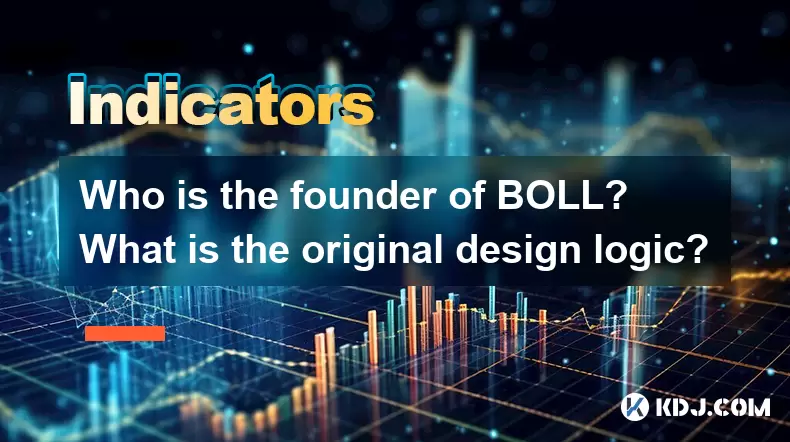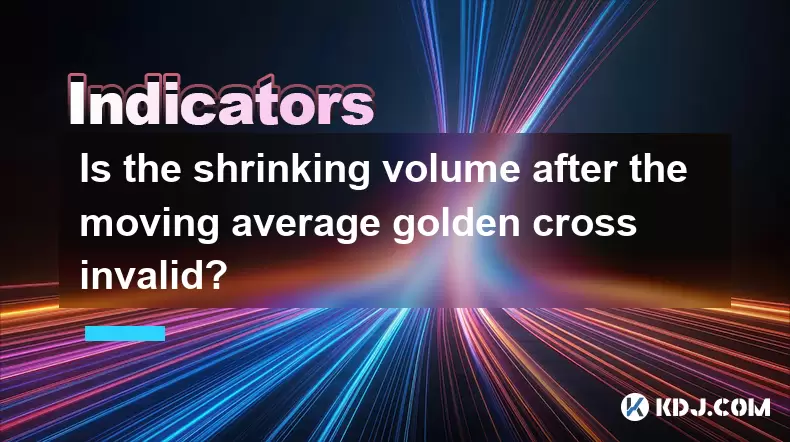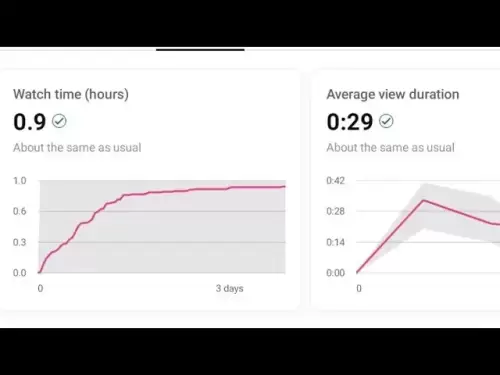-
 Bitcoin
Bitcoin $103,456.1111
0.49% -
 Ethereum
Ethereum $2,414.9631
0.02% -
 Tether USDt
Tether USDt $1.0006
0.05% -
 XRP
XRP $2.1083
0.24% -
 BNB
BNB $634.8760
-0.76% -
 Solana
Solana $139.8437
1.94% -
 USDC
USDC $0.9998
-0.01% -
 TRON
TRON $0.2737
0.97% -
 Dogecoin
Dogecoin $0.1602
0.20% -
 Cardano
Cardano $0.5737
1.08% -
 Hyperliquid
Hyperliquid $32.9779
-2.54% -
 Bitcoin Cash
Bitcoin Cash $474.8886
-1.80% -
 Sui
Sui $2.6272
-1.99% -
 Chainlink
Chainlink $12.4878
0.14% -
 UNUS SED LEO
UNUS SED LEO $8.9234
0.35% -
 Stellar
Stellar $0.2411
-0.18% -
 Avalanche
Avalanche $17.0274
-0.70% -
 Toncoin
Toncoin $2.8936
-1.11% -
 Shiba Inu
Shiba Inu $0.0...01112
-0.58% -
 Litecoin
Litecoin $82.6982
1.33% -
 Hedera
Hedera $0.1423
-0.05% -
 Monero
Monero $314.8455
3.26% -
 Ethena USDe
Ethena USDe $1.0006
0.01% -
 Polkadot
Polkadot $3.4043
1.14% -
 Dai
Dai $0.9999
0.01% -
 Bitget Token
Bitget Token $4.2848
-0.13% -
 Uniswap
Uniswap $6.8748
-5.45% -
 Pepe
Pepe $0.0...09661
0.52% -
 Pi
Pi $0.5359
1.19% -
 Aave
Aave $242.9168
-1.03%
Who is the founder of BOLL? What is the original design logic?
John Bollinger's Bollinger Bands, using standard deviation, help traders assess crypto market volatility and potential price movements effectively.
May 27, 2025 at 10:07 pm

The founder of the Bollinger Bands (BOLL) indicator is John Bollinger. John Bollinger, a renowned technical analyst and financial author, introduced this widely used technical analysis tool in the early 1980s. Bollinger Bands have become a staple in the toolkit of traders across various financial markets, including the cryptocurrency market, due to their effectiveness in assessing market volatility and potential price movements.
The Origin and Design Logic of Bollinger Bands
John Bollinger developed Bollinger Bands as a means to better understand market volatility and price levels. The original design logic of Bollinger Bands is rooted in the concept of standard deviation, a statistical measure that quantifies the amount of variation or dispersion in a set of data values. By applying standard deviation to price data, Bollinger aimed to create a dynamic indicator that could adapt to changing market conditions.
Components of Bollinger Bands
Bollinger Bands consist of three lines plotted on a price chart:
- Middle Band: This is typically a simple moving average (SMA) of the closing prices over a specified period, commonly set to 20 periods.
- Upper Band: This is calculated by adding two standard deviations to the middle band.
- Lower Band: This is calculated by subtracting two standard deviations from the middle band.
The use of standard deviation allows the bands to expand and contract based on the volatility of the market. When the market is highly volatile, the bands widen; when the market is less volatile, the bands narrow.
Application in the Cryptocurrency Market
In the context of the cryptocurrency market, Bollinger Bands serve as a valuable tool for traders looking to gauge market conditions and make informed trading decisions. Cryptocurrencies are known for their high volatility, making tools like Bollinger Bands particularly useful.
- Identifying Overbought and Oversold Conditions: When the price of a cryptocurrency touches or moves outside the upper band, it may be considered overbought, suggesting a potential price correction. Conversely, when the price touches or moves outside the lower band, it may be considered oversold, indicating a potential price rebound.
- Breakouts and Trends: Bollinger Bands can also help traders identify potential breakouts. A price move that breaks through the upper or lower band can signal the beginning of a new trend. Additionally, the direction of the middle band can provide insights into the overall trend of the market.
Practical Use of Bollinger Bands in Crypto Trading
To effectively use Bollinger Bands in cryptocurrency trading, traders follow a series of steps to set up and interpret the indicator:
Setting Up Bollinger Bands on a Chart:
- Open your preferred trading platform or charting software.
- Select the cryptocurrency pair you wish to analyze.
- Add the Bollinger Bands indicator to your chart. Most platforms will allow you to customize the period and standard deviation settings.
- Set the period to 20 and the standard deviation to 2, as these are the default and commonly used settings.
Analyzing the Bands:
- Observe the position of the price relative to the bands. Is the price near the upper band, lower band, or in the middle?
- Look for patterns such as the price repeatedly touching the upper or lower band, which can indicate a strong trend.
- Pay attention to the width of the bands. Narrow bands suggest low volatility and may precede a significant price move.
Making Trading Decisions:
- If the price is consistently near or above the upper band, consider selling or taking profits, as the market may be overbought.
- If the price is consistently near or below the lower band, consider buying, as the market may be oversold.
- Watch for price breakouts above the upper band or below the lower band, which can signal the start of a new trend.
Limitations and Considerations
While Bollinger Bands are a powerful tool, they are not infallible and should be used in conjunction with other indicators and analysis methods.
- False Signals: Like any technical indicator, Bollinger Bands can produce false signals. A price touching the upper or lower band does not always mean a reversal will occur.
- Market Context: The effectiveness of Bollinger Bands can vary depending on the market context. In highly trending markets, the bands may remain wide for extended periods, making it challenging to identify overbought or oversold conditions.
- Confirmation: It's crucial to use other indicators, such as the Relative Strength Index (RSI) or Moving Average Convergence Divergence (MACD), to confirm signals generated by Bollinger Bands.
Bollinger Bands and Cryptocurrency Volatility
Cryptocurrencies are notorious for their volatility, which can be both a blessing and a curse for traders. Bollinger Bands are particularly well-suited for this environment because they adapt to changes in volatility.
- Volatility Squeezes: One of the most popular trading strategies involving Bollinger Bands in the crypto market is the volatility squeeze. A volatility squeeze occurs when the bands narrow significantly, suggesting that the market is consolidating and a significant price move may be imminent.
- Volatility Breakouts: Traders often look for breakouts following a volatility squeeze. A price breakout above the upper band can signal the start of an uptrend, while a breakout below the lower band can indicate the beginning of a downtrend.
Real-World Examples in Cryptocurrency Trading
To illustrate the practical application of Bollinger Bands in the cryptocurrency market, consider the following examples:
Bitcoin (BTC) Price Analysis: Suppose the price of Bitcoin is trading within the Bollinger Bands, and the bands are relatively narrow. A trader might anticipate a volatility squeeze and prepare for a potential breakout. If the price subsequently breaks above the upper band, the trader could enter a long position, expecting the start of an uptrend.
Ethereum (ETH) Overbought/Oversold Conditions: If the price of Ethereum consistently touches the upper Bollinger Band, a trader might interpret this as an overbought condition and consider selling or taking profits. Conversely, if the price touches the lower band, the trader might see it as an oversold condition and consider buying.
Frequently Asked Questions
Q: Can Bollinger Bands be used for short-term trading in the cryptocurrency market?
A: Yes, Bollinger Bands can be effectively used for short-term trading in the cryptocurrency market. Traders often use shorter periods for the moving average and standard deviation to capture more immediate market movements. However, it's important to combine Bollinger Bands with other indicators to confirm signals and manage risk.
Q: How do Bollinger Bands perform during periods of high volatility in the crypto market?
A: During periods of high volatility, Bollinger Bands tend to widen, reflecting the increased price fluctuations. This can make it more challenging to identify overbought or oversold conditions, but it also provides opportunities for traders to capitalize on significant price movements. Traders should be cautious and use additional analysis to confirm their trading decisions.
Q: Are there any specific settings for Bollinger Bands that work best in the cryptocurrency market?
A: While the default settings of a 20-period moving average and 2 standard deviations are widely used, some traders adjust these settings based on their trading strategy and the specific cryptocurrency they are analyzing. For highly volatile cryptocurrencies, some traders may use a shorter period (e.g., 10 periods) to capture more immediate price movements. It's essential to backtest different settings to find what works best for your trading approach.
Q: Can Bollinger Bands be used to predict cryptocurrency price reversals?
A: Bollinger Bands can provide insights into potential price reversals, but they should not be used as a standalone predictor. When the price touches or moves outside the upper or lower band, it may indicate that a reversal is imminent. However, traders should look for confirmation from other indicators and consider the overall market context before making trading decisions based on these signals.
Disclaimer:info@kdj.com
The information provided is not trading advice. kdj.com does not assume any responsibility for any investments made based on the information provided in this article. Cryptocurrencies are highly volatile and it is highly recommended that you invest with caution after thorough research!
If you believe that the content used on this website infringes your copyright, please contact us immediately (info@kdj.com) and we will delete it promptly.
- Ruvi AI: The Audited Token Poised to Outshine Shiba Inu
- 2025-06-22 10:25:12
- Dypians, DeFi, and Sei Network: A Deep Dive into the Latest Trends
- 2025-06-22 10:25:12
- Hacken Security Breach Highlights Risks Across Ethereum and BSC
- 2025-06-22 08:25:12
- SHIB Price, Forecasts, Timelines: Will Shiba Inu Ever Reach the 'One-Cent Dream'?
- 2025-06-22 08:25:12
- Avalanche vs. Ruvi AI: Why Smart Money's on This Audited Token
- 2025-06-22 08:45:12
- Bitcoin Demand on Pause: What's Next for the Crypto King?
- 2025-06-22 08:45:12
Related knowledge

Does the second surge in the RSI overbought zone induce more?
Jun 22,2025 at 08:35am
Understanding the RSI Overbought ZoneThe Relative Strength Index (RSI) is a momentum oscillator commonly used in technical analysis to measure the speed and change of price movements. It ranges from 0 to 100, with values above 70 typically considered overbought and values below 30 considered oversold. When the RSI enters the overbought zone for the firs...

Does the sudden contraction of ATR indicate the end of the trend?
Jun 20,2025 at 11:14pm
Understanding ATR and Its Role in Technical AnalysisThe Average True Range (ATR) is a technical indicator used to measure market volatility. Developed by J. Welles Wilder, ATR calculates the average range of price movement over a specified period, typically 14 periods. It does not indicate direction—only volatility. Traders use ATR to gauge how much an ...

Is it invalid if the DMI crosses but the ADX does not expand?
Jun 21,2025 at 09:35am
Understanding the DMI and ADX RelationshipIn technical analysis, the Directional Movement Index (DMI) consists of two lines: +DI (Positive Directional Indicator) and -DI (Negative Directional Indicator). These indicators are used to determine the direction of a trend. When +DI crosses above -DI, it is often interpreted as a bullish signal, while the opp...

How to filter false signals when the SAR indicator frequently flips?
Jun 21,2025 at 08:43pm
Understanding the SAR Indicator and Its BehaviorThe SAR (Stop and Reverse) indicator is a popular technical analysis tool used in cryptocurrency trading to identify potential reversals in price movement. It appears as a series of dots placed either above or below the price chart, signaling bullish or bearish trends. When the dots are below the price, it...

Is the trend continuation when the Williams indicator is oversold but there is no rebound?
Jun 20,2025 at 11:42pm
Understanding the Williams %R IndicatorThe Williams %R indicator, also known as the Williams Percent Range, is a momentum oscillator used in technical analysis to identify overbought and oversold levels in price movements. It typically ranges from 0 to -100, where values above -20 are considered overbought and values below -80 are considered oversold. T...

Is the shrinking volume after the moving average golden cross invalid?
Jun 22,2025 at 10:42am
Understanding the Moving Average Golden Cross in CryptocurrencyIn the world of cryptocurrency trading, technical indicators play a crucial role in decision-making. One such indicator is the moving average golden cross, which occurs when a short-term moving average crosses above a long-term moving average, typically signaling a bullish trend. This event ...

Does the second surge in the RSI overbought zone induce more?
Jun 22,2025 at 08:35am
Understanding the RSI Overbought ZoneThe Relative Strength Index (RSI) is a momentum oscillator commonly used in technical analysis to measure the speed and change of price movements. It ranges from 0 to 100, with values above 70 typically considered overbought and values below 30 considered oversold. When the RSI enters the overbought zone for the firs...

Does the sudden contraction of ATR indicate the end of the trend?
Jun 20,2025 at 11:14pm
Understanding ATR and Its Role in Technical AnalysisThe Average True Range (ATR) is a technical indicator used to measure market volatility. Developed by J. Welles Wilder, ATR calculates the average range of price movement over a specified period, typically 14 periods. It does not indicate direction—only volatility. Traders use ATR to gauge how much an ...

Is it invalid if the DMI crosses but the ADX does not expand?
Jun 21,2025 at 09:35am
Understanding the DMI and ADX RelationshipIn technical analysis, the Directional Movement Index (DMI) consists of two lines: +DI (Positive Directional Indicator) and -DI (Negative Directional Indicator). These indicators are used to determine the direction of a trend. When +DI crosses above -DI, it is often interpreted as a bullish signal, while the opp...

How to filter false signals when the SAR indicator frequently flips?
Jun 21,2025 at 08:43pm
Understanding the SAR Indicator and Its BehaviorThe SAR (Stop and Reverse) indicator is a popular technical analysis tool used in cryptocurrency trading to identify potential reversals in price movement. It appears as a series of dots placed either above or below the price chart, signaling bullish or bearish trends. When the dots are below the price, it...

Is the trend continuation when the Williams indicator is oversold but there is no rebound?
Jun 20,2025 at 11:42pm
Understanding the Williams %R IndicatorThe Williams %R indicator, also known as the Williams Percent Range, is a momentum oscillator used in technical analysis to identify overbought and oversold levels in price movements. It typically ranges from 0 to -100, where values above -20 are considered overbought and values below -80 are considered oversold. T...

Is the shrinking volume after the moving average golden cross invalid?
Jun 22,2025 at 10:42am
Understanding the Moving Average Golden Cross in CryptocurrencyIn the world of cryptocurrency trading, technical indicators play a crucial role in decision-making. One such indicator is the moving average golden cross, which occurs when a short-term moving average crosses above a long-term moving average, typically signaling a bullish trend. This event ...
See all articles
























































































